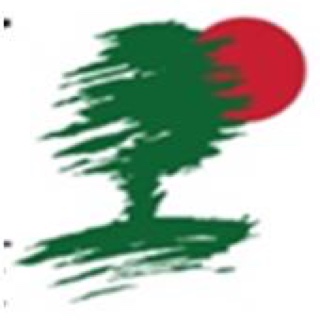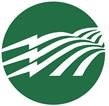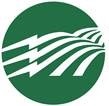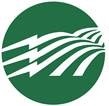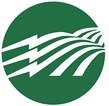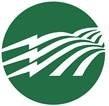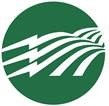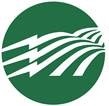Information
-
Project Number
-
Audit Title
-
Client / Site
-
Conducted on
-
Workgroup
-
Business Unit
-
Number of Employees
-
Job Titles
-
Prepared by
-
Location
-
Personnel
-
Audit Guidance: -All unsafe acts shall be stopped immediately. -Field Observations shall include photos for both safe and unsafe operations. Photos should be annotated with what the observer is focused on at the time of the audit. -Any item marked as a deficiency shall have a photo (if possible) and a detailed description. -All comments should identify those crew members performing the task correctly and/or incorrectly. -Equipment being inspected shall be listed and/or have a photo with the unit number displayed. -All audits shall be reviewed with the PIC prior to departure from the site. Corrective actions shall be assigned with due dates and noted on the audit. -Any audits being forwarded to the client shall be reviewed by more than one safety team member prior to being sent.
Communication
-
When was the last time you were coached from a member of management on safety?
-
On a scale of 1-10, with 10 being the best, how effective do you consider Human Performance to be?
-
On a scale of 1-10, with 10 being very often, 5 being sometimes, and 1 being never, how often do you use Human Performance?
-
Prior to making a decision, do you think Likelihood or Consequences?
-
Human Performance tools observed and bieng utilized correctly?
-
Three part communication utilized?
-
Proper use of hand signals and flagging techniques? spotters properly positioned?
-
Hand Held radios mounted, charged and being utilized properly?
Procedures and Documents
-
WI-OPS-2101, Mat Handling reviewed and understood?
-
Mat load chart referenced and utilized? Unit capacities identified (including trailer capacity)?
-
All Tailboard, Site/driving hazard assessments completed and adequate? (assigned tasks, circle slash, hazards, mitigations, signatures, emergent actions)
-
Weekly inspection sheets complete?
-
Paperwork (Private Motor Carrier License, Haz-Mat Registration, Vehicle Registration(s), Insurance Certificate, IFTA License & Stickers, Annual Inspections(s).392.2-396.17?
-
Are SDS available for all hazardous chemicals on site ?
Displays and Labels
-
Is the work site properly marked and/or barricaded?
-
Is appropriate signage in place on entry?
-
Early warning signs placed for overhead/underground hazards?
Environmental
-
Spill kits available and stocked?
Schedule
-
Crew schedules identified and fatigue management addressed?
-
Schedules communicated for simultaneous/multiple operations?
Work Practices
-
Proper setting of mats? ground prepped, mats pushed together, transitions in place, cables flagged, nails or bolts identified as hazards, swept as needed, forks not stuck in sides.
-
Proper mat loading and unloading techniques in accordance with WI-OPS-2101? lifting from mat side of trailer, balanced loads and placement, properly stacked etc..
-
Proper mat cleaning methods? tip washed, repairs done, power washer safety, damaged mats graded and stacked seperate etc..
-
Proper mat cribbing in place?
-
TOC/DOC notified ?
-
Are the appropriate flagmen or spotters being utilized near mobile heavy equipment or suspended loads?
-
Taglines when moving suspended loads?
-
Are proper lifting/carrying techniques utilized?
-
Are proper pushing/pulling techniques utilized?
-
Are employees using 3 points of contact when ascending, descending, and climbing?
-
Are cell phones being use appropriately?
-
Is employee mindful of line of fire and pinch points?
-
Are all units, compartments and fill caps locked when machines are unattended?
-
Proper rigging, lifting, hand signals, and good communication being utilized?
-
Is the housekeeping good?
Work Planning
-
Job Plan (does everyone know duties)?
-
Poison Ivy mitigation plan?
-
Animals, insects and plants mitigated?
-
Is fall protection equipment in good condition and rescue plan in place (if applicable >4 feet)?
-
If more than one crew present (contract or Entergy), lead(s) are identified and communication is occuring?
Supervision/Management
-
Policies, practices, procedures properly defined and crew reviewed/understood?
-
risks/consequences of tasks properly addressed?
-
Short service employee's identified and assigned mentors?
-
incidents/near misses reported in a timely manner?
-
Emphasis of schedule exceeding safe work?
-
Supervision interfacing with workers?
-
Supervision verifying the job hazard analysis/job plan is being followed?
-
Timely response to known problems?
-
Crew lead demonstrated leadership ability?
Training/Qualification
-
Powersafe complete and up to date
-
Crew Members qualified for task being performed?
Change Management
-
JSA updated periodically and whenever work task changes? Updated,covered and time stamped at lunch.
External Influence
-
Weather conditions discussed and documented?
-
Heat mitigation plan in use and documented?
-
Public encrouchment on job site discussed and documented on JSA?
System/Equipment Operation
-
Back up alarms working properly
-
Mats in good condition and properly marked?
-
Slings and rigging properly inspected and adequate?
-
Are seat belts being used on applicable equipment while in operation?
-
Parking Brake (Apply) 393.41?
-
Equipment Parked over bare dirt (fire hazards mitigated), end to end or side by side. N/A if not seen at time of audit
Personnel and Materials Management
-
Sufficient personnel assigned to task?
-
Adequate materials provided to complete task?
Equipment Selection and use
-
Applicable PPE being worn and in good condition? Hard hat, safety glasses/face shield, hearing protection, FR, safety vest, footwear, gloves, glove clips etc.
-
Is all equipment set up for safe use?
-
Are fire extinguishers on site, within date, and in good working order?
-
Is PVD operational (if applicable)?
-
are uptime kits on location?
-
Fuel tanks full or left full?
-
Non-frayed winch lines?
-
Are the proper tools for the job being utilized, and are tools in good condition with no modifications?
-
Eye wash station or solution in good working order and readily available?
-
Safety/medical/first aid equipment goods on site and within date, including gel blankets?
Basic Machine Maintenance/Testing (minimum of 2 pics and 2 noted observations for this category)
-
Unit photos
-
Has the crew performed and documented an inspection of the forklift/ manlift/Skytrack prior to work to assure equipment is in safe operating condition?
-
All BMM issues addressed (reference BMM audit form as needed and document findings here)?
-
compressors covered, cab clean, debris cleaned from machine, properly greased and wiped, engine and pump compartments clean, oil and hydraulics proper level, mirrors, windshield, transmission oil, windows cleaned with pledge, wipers, radiator, heater defroster, warm up and cool down, tires and tracks, undercarriage, weekly checklist, leaks, lights, gauges, decals,
DOT issues
-
DOT issues (refer to DOT audit form for reference)?
-
Emergency triangles, accident kit, Steering wheel operation, Low air warnings/issues, steering axle tires, lugs, fuel system, tow system/attachments, exhaust system, body frame, brakes (inspection done), trailer reflective tape, trailer landing gear, trailer tires, electrical, trailer coupling devices (king pin), trailer brakes, horn.
Site Design Configuration
-
Ample space for machine operations?
-
Are appropriate DOT signs and cones in place and traffic control plan documented?
-
Equipment properly barricaded when work is performed near live voltage or when grounded?
Summary and signatures
-
Positive observations. List crew members and specific items they are doing correctly:
-
Inspectors signature
-
Crew lead signature
